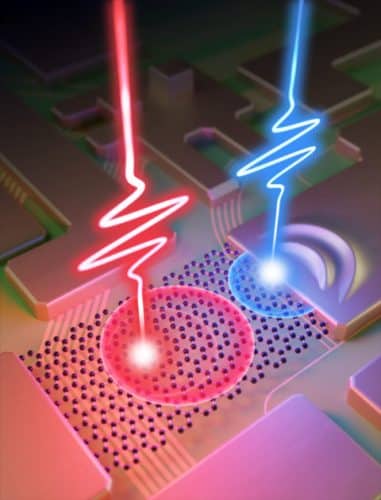Lightwave electronics is a promising technique to produce ultrafast electronics. It uses laser light to regulate the migration of electrons in matter and then uses this control to develop electronic circuit elements.
Researchers from the University of Rochester and Friedrich-Alexander-Universität Erlangen-Nürnberg (FAU) have demonstrated a femtosecond logic gate. Scientists have just discovered how to manufacture ultrafast bursts of electrical currents using laser pulses lasting a few femtoseconds. This can be accomplished by illuminating microscopic graphene-based wires that join two gold metals.
The researchers came to the insight that at gold-graphene-gold junctions, the particles transporting the charges that make up these bursts of electricity can be generated in two flavors—”real” and “virtual.”
- “Real” charge carriers are electrons excited by light that remain in directional motion even after the laser pulse is turned off.
- “Virtual” charge carriers are electrons that are only set in net directional motion while the laser pulse is on. As such, they are elusive species that only live transiently during illumination.

The team was able to demonstrate logic gates that work on a femtosecond timescale for the first time using this information. The shape or phase of two synchronised laser pulses, each designed to only generate a burst of real or virtual charge carriers, are used as input signals in the researchers’ experiment. These two contributions to the currents can either add up or cancel out depending on the laser phases used. An ultrafast logic gate can be created by assigning logical information 0 or 1 to the net electrical signal.
“It will probably be a very long time before this technique can be used in a computer chip, but at least we now know that lightwave electronics is practically possible,” says Tobias Boolakee, who led the experimental efforts as a PhD student at FAU.
“What is amazing about this logic gate,” says Ignacio Franco, Associate Professor of Chemistry and Physics at Rochester, “is that the operations are performed not in gigahertz, like in regular computers, but in petahertz, which are one million times faster. This is because of the really short laser pulses used that occur in a millionth of a billionth of a second.”






